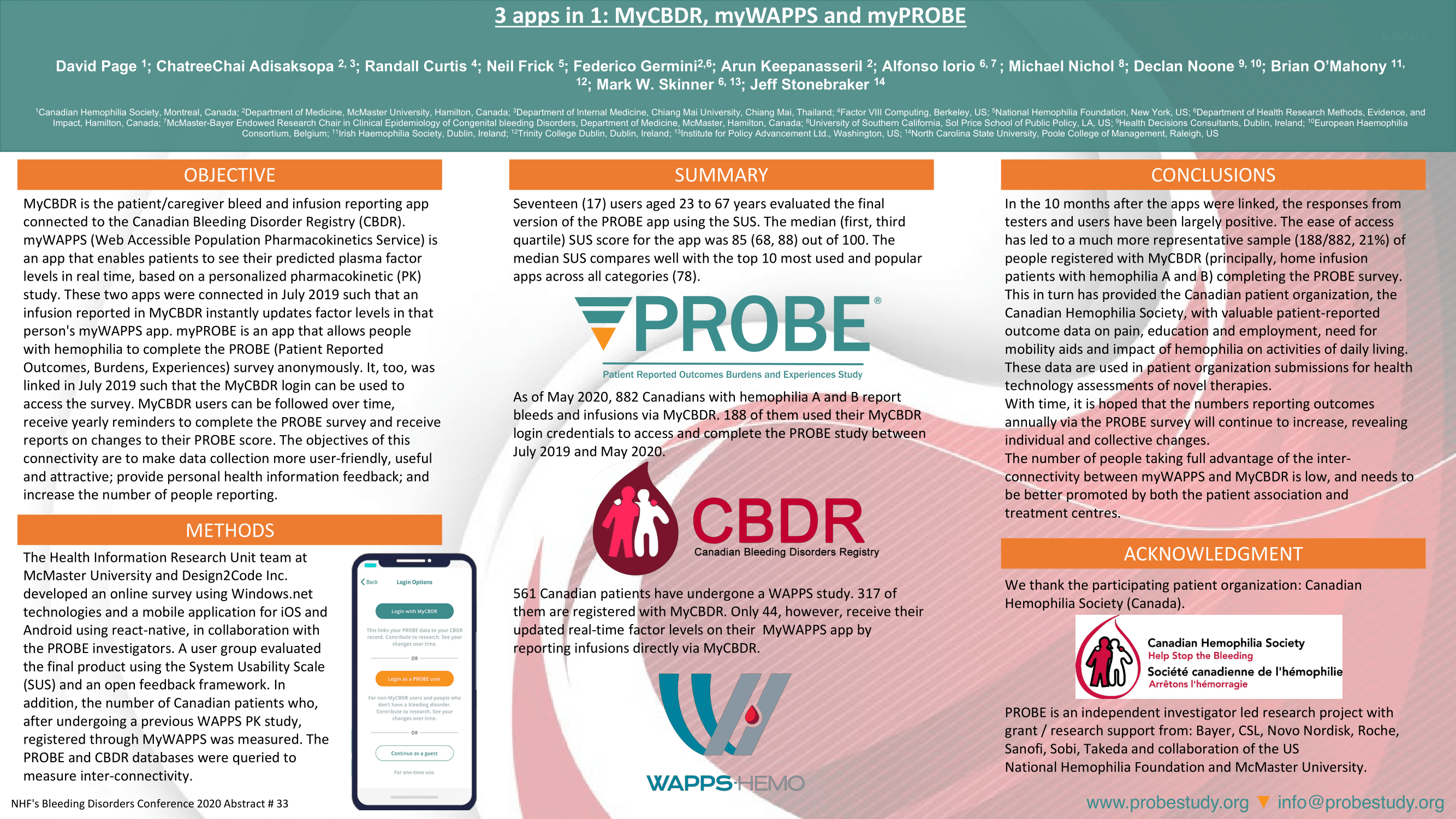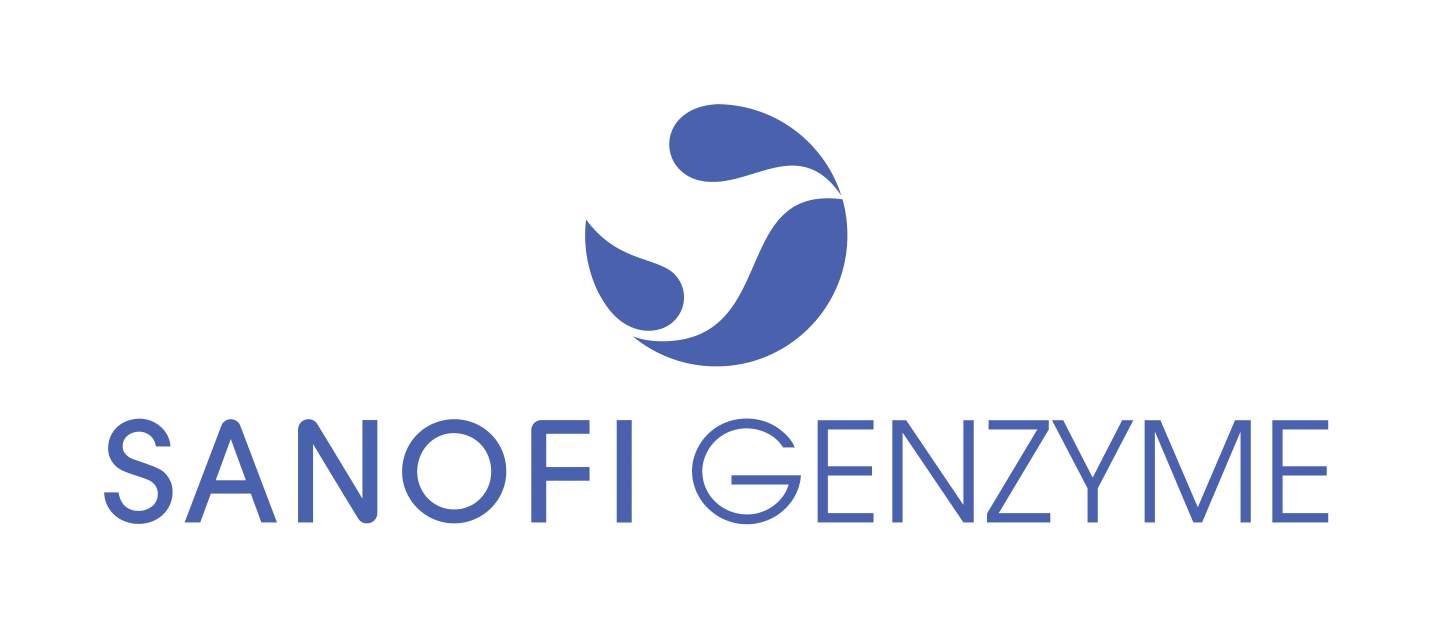National Hemophilia Foundation (NHF) - Posters
3 apps in 1: MyCBDR, myWAPPS and myPROBE |
|
|
|

|
Objective:
MyCBDR is the patient/caregiver bleed and infusion reporting app connected to the Canadian Bleeding Disorder Registry. myWAPPS is an app that enables patients to see their personalized predicted plasma factor levels in real-time. These two apps were connected in July 2019 such that an infusion reported in MyCBDR instantly updates factor levels in myWAPPS. myPROBE is an app that allows people with hemophilia to complete the PROBE survey on patient-reported outcomes on-line and, through anonymous registration, be followed longitudinally. It, too, was linked in July 2019 such that the MyCBDR login can be used and MyCBDR users can be followed over time, receive yearly reminders to complete the PROBE survey and receive reports on changes to their PROBE score. The objective of this connectivity is to make data collection more user-friendly, useful and attractive.
Methods:
The Health Information Research Unit team at McMaster University and Design2Code Inc. developed an online survey using Windows.net technologies and a mobile application for iOS and Android using react-native, in collaboration with the PROBE investigators. A user group evaluated the final product using the system usability scale (SUS) and an open feedback framework. In addition, the number of Canadian patients who, after undergoing a previous WAPPS pharmacokinetics study, registered through MyWAPPS was measured.
Summary:
Seventeen users aged 23 to 67 years evaluated the final version of the PROBE app using the SUS. The median (first, third quartile) SUS score for the app was 85 (68, 88) out of 100.The median SUS compares well with the top 10 most used and popular apps across all categories (78). 165 Canadians with hemophilia used their CBDR credentials to complete the PROBE study. 37 Canadian patients registered for myWAPPS via MyCBDR.
Conclusions:
In the first months after the apps were linked, the responses from testers and users have been largely positive. Over time, the inter-connectivity will lead to increased patient/caregiver engagement with their care and improved data collection.



